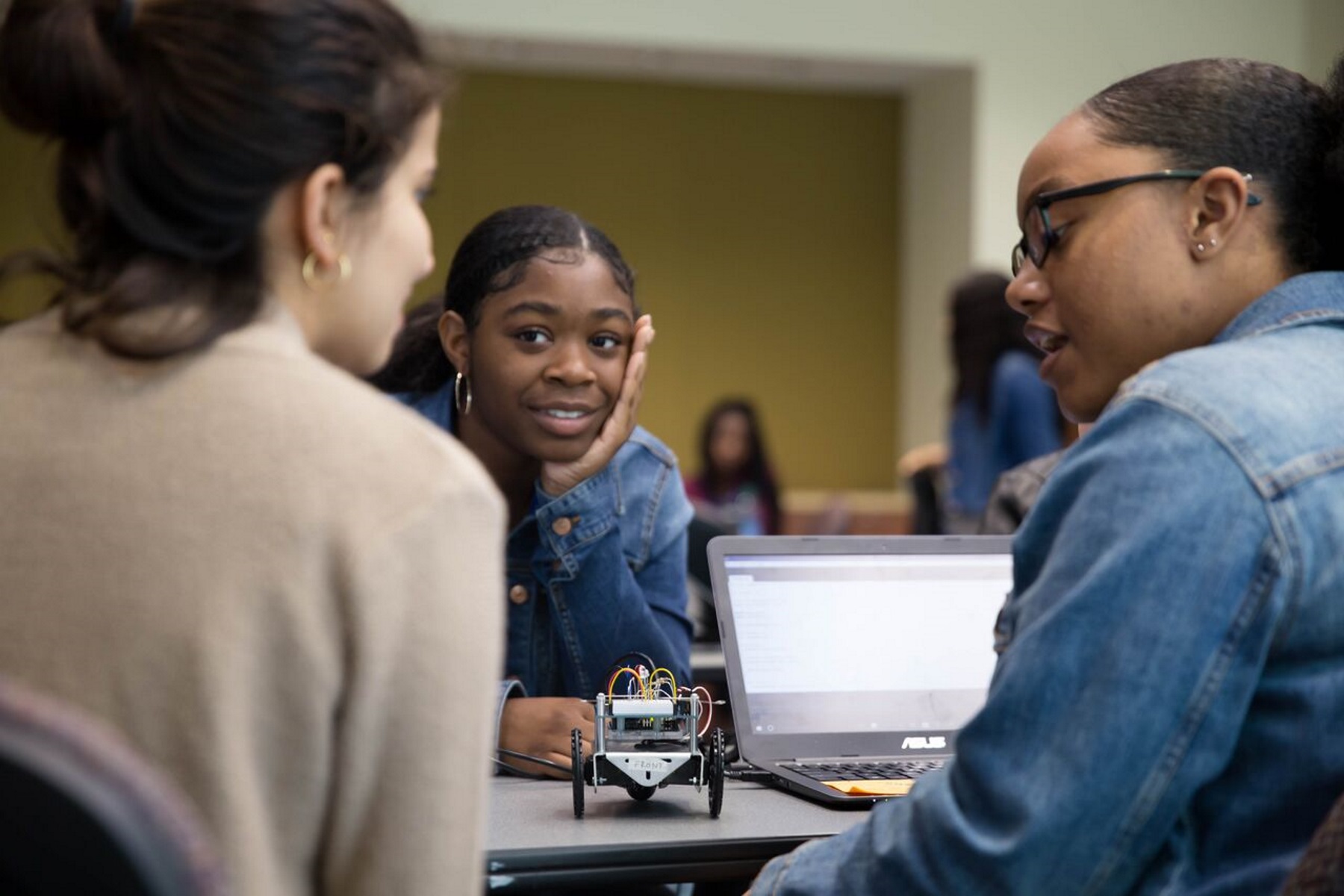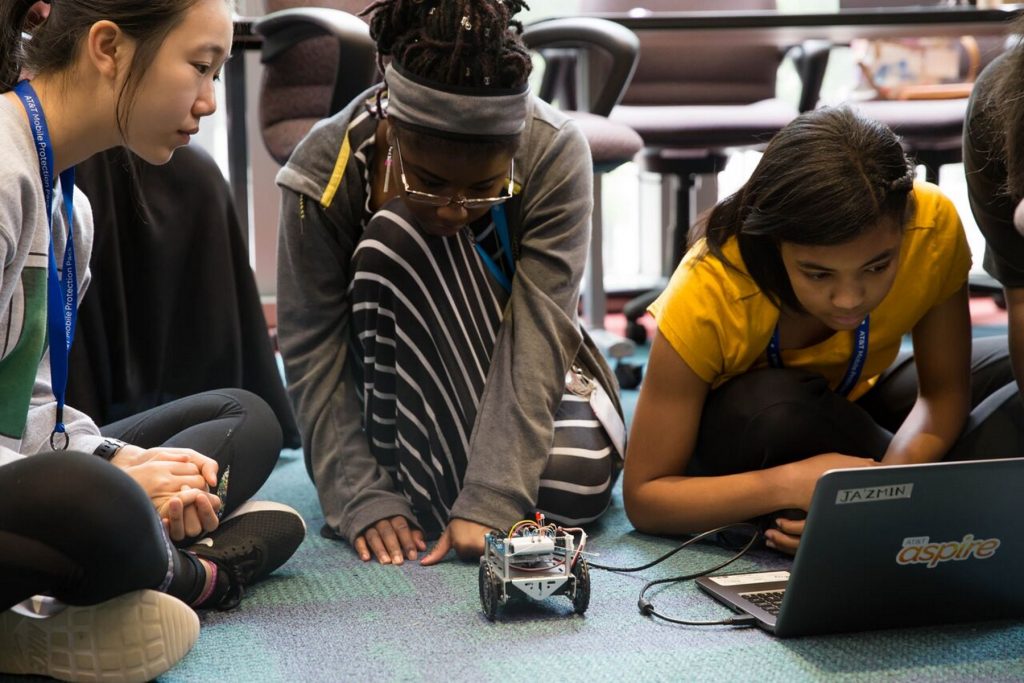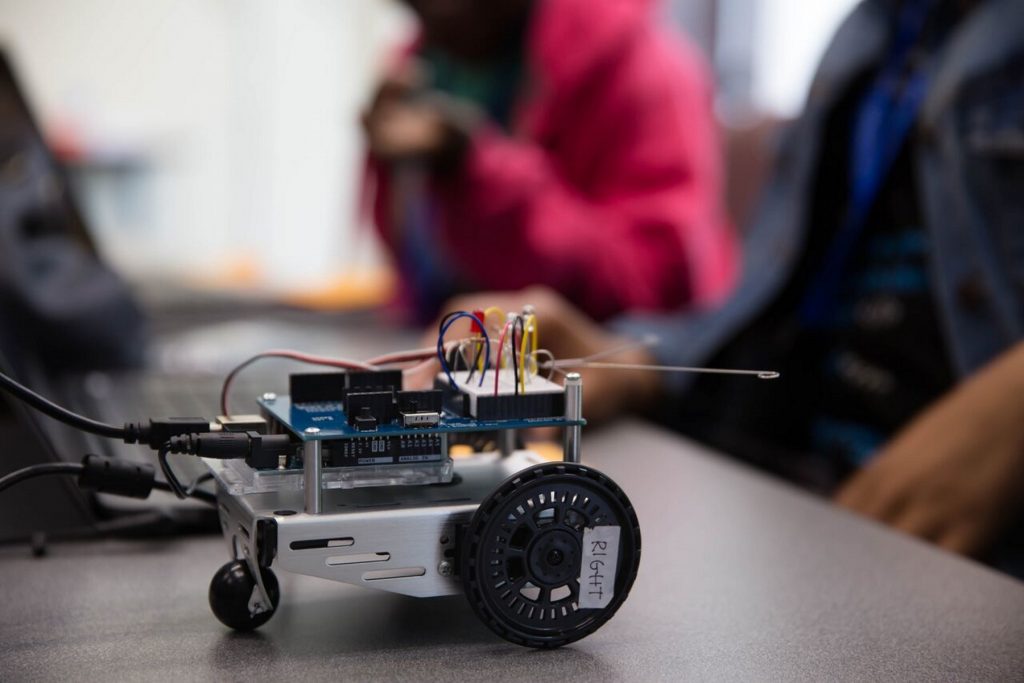‘Girls Who Code’ Aims To Level Technology Playing Field

Students Shauntianna Ziegler, center, and Kody Jackson, right, check their work with an instructor at a Girls Who Code summer program taught at AT&T.
Ian Palmer / WABE
The rapid growth of technology jobs has led to a push for computer programming and coding classes in schools. Clubs and classes are popping up as early as kindergarten.
Coding 101
Girls Who Code is a national nonprofit that offers coding classes for high school girls. It targets low-income, minority students who may lack access to such programs, but it doesn’t limit admission to those girls alone.
During the school year, the organization teaches coding through after-school clubs. In the summer, it teams up with businesses to offer an intensive, seven-week coding class for girls.
Atlanta businesses that offer summer immersion programs include Accenture, AT&T, General Electric and Turner Broadcasting. Students come from all over the metro region and have various skill levels when they start the session.

Kimberly Luong is a lead teacher at the Girls Who Code summer program taught at AT&T. She says everyone should be able to get something out of the course, regardless of their coding background.
“We just start with the basics,” Luong says. “Sometimes I get the students who already know how to code to help teach the students who don’t. We just give each student an individualized, personalized level of teaching.”
One day in June, at the start of their third week, the 21 girls in Luong’s class work to program a small robot. They are working in groups, using a coding language to tell the robot how to navigate a room.
“We’re trying to get the robot to detect obstacles in the room, so if it would move into something, we want it to back up and turn to the right,” explains Kody Jackson, a senior at DeKalb School of the Arts. She wants to be a computer scientist, so she says this class is a good fit for her.
However, Luong says, the class should benefit all students, even if they don’t want to enter the tech sector.
“It’s always good to have coding skills, even if you’re not going to be a computer scientist,” Luong says. “If you want to be maybe a physicist or a chemist, you can use it for data science, or if you’re into fashion, you can use it to do high-level fashion with blinking LEDs.”
Shortage or Surplus?
Now, there’s a high demand for tech-savvy workers. There’s also a demand for women. Men currently fill the majority of technology jobs.
However, some experts fear a surge in coding classes could overcorrect the problem. Schools could start producing so many computer scientists they’ll outnumber available jobs. There’s also uncertainty within the tech industry about what those future jobs will be.
“Are we training all of these young people to be coders, and we may not need coders? There’s probably some truth to that,” says Tracy Gray, managing director at the American Institutes for Research and an expert in education and technology. “However, what we are doing is preparing students to be able to tackle STEM [science, technology, engineering and math]-related fields and to feel relatively comfortable with it as the technology changes and the workforce changes.”
Gray says learning to code teaches kids how to problem-solve and think critically.
“It really is about giving them the skills to be cognitively flexible and nimble and to have a sufficient aptitude for jobs of the future and skills of the future.”

Students like Shauntianna Ziegler understand that. She’s a senior at Arabia Mountain High School, where she’s on a health care pathway. She likes learning to code but wants to be a physician one day.
“If I still pursue my health care career path, eventually I could incorporate technology and maybe invent something new that would help,” she says.
Proponents of Girls Who Code say that’s the point of programs like this: that students, like Shauntianna, acquire skills to help them excel in any field they choose.








